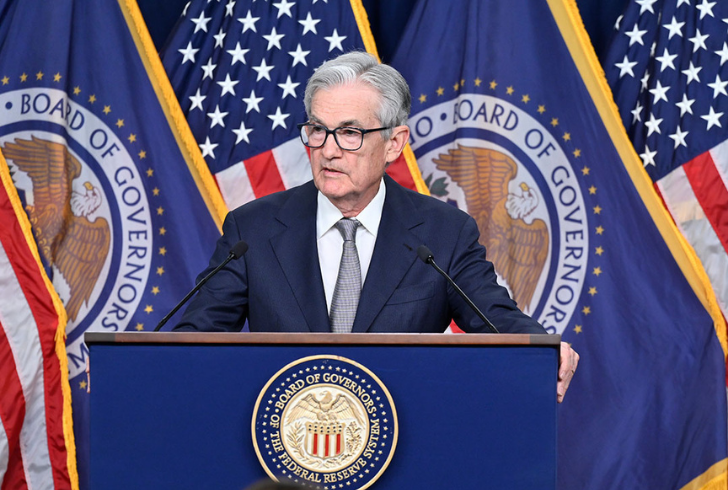In the fast-paced world of Wall Street, where predictions and forecasts hold significant weight, a recent trend has emerged – stock market upgrades are now being viewed as downgrades. This shift in perspective is causing ripples in the financial landscape, leaving investors and analysts alike pondering the reasons behind this unexpected turn of events.
A Closer Look at the Numbers
The year 2024 has kicked off with a flurry of revised forecasts from prominent financial institutions. JPMorgan, Morgan Stanley, UBS, Wells Fargo, Evercore, Barclays, Bank of America, Goldman Sachs, Deutsche Bank, Citi, RBC, and Fundstrat have all offered their projections for the S&P 500 at the year’s end.

The numbers range from 4,200 to 5,200, reflecting a spectrum of expectations within the financial community. Once seen as upgrades, these forecasts are now being approached with a more tempered outlook, signaling a shift in sentiment toward the market’s trajectory.
Rethinking Enthusiasm
RBC Capital’s Lori Calvasina exemplifies this shift by raising her 2024 price target for the S&P 500 to 5,150 from 5,000. However, this seemingly positive adjustment is accompanied by a more cautious stance than that of her previous forecast in November 2023.
Rather than exuding unbridled optimism, Calvasina’s team has adopted a more nuanced approach, acknowledging the evolving market dynamics and adjusting their projections accordingly. This “higher but lower” outlook underscores the changing sentiment permeating Wall Street and the broader investment community.
Market Sentiment and Federal Reserve Influence
The underlying factors contributing to this reevaluation of stock market upgrades are multifaceted. The Federal Reserve’s tone and forecasts heavily influenced market sentiment and have played a pivotal role in shaping investors’ perceptions. The Federal Reserve indicated a more aggressive interest rate reduction in 2024, which triggered a significant rally across asset classes.

However, the initial exuberance was followed by a lackluster start to the year, marking the worst opening since 2016. This abrupt shift in market performance has prompted analysts to reassess their earlier projections in light of the unfolding events.
Unraveling the Puzzle
A crucial element in deciphering this paradigm shift lies in understanding whether the market anticipates, reacts, or influences the Federal Reserve’s decisions. The consensus points to the market’s anticipation of lower interest rates as a driving force behind the recent surge.
Following the Fed’s announcement, the subsequent market pullback further underscores the intricate relationship between market dynamics and central bank policies. This interplay has led to reevaluating the earlier upgrades, prompting a more measured approach to forecasting the market’s trajectory.
The Impact on Investor Sentiment
The American Association of Individual Investors sentiment survey has provided valuable insights into the evolving investor sentiment. The recent surge in bullish sentiment suggests a more subdued market over the next three months, with gains projected to be around 6% over the next 12 months, contrasting with earlier indications of a 10% rise over the same period.
This oscillation in sentiment underscores the uncertainty prevailing in the market and the challenge of making accurate forecasts amidst rapidly changing dynamics.
Navigating the Terrain Ahead

The need for a nuanced and adaptive approach to stock market projections becomes increasingly apparent as the market adapts to evolving economic and geopolitical landscapes.
The intricate interplay between market sentiment, economic indicators, and central bank policies underscores the complexity of forecasting in today’s financial environment. Navigating this terrain requires astute analysis, adaptability, and a keen understanding of the underlying forces shaping market dynamics.
Embracing a Balanced Perspective
Amidst the evolving narrative of stock market upgrades transforming into downgrades, it becomes imperative for investors and analysts to embrace a balanced and informed perspective.
The shifting tides of market sentiment and the intricate relationship between market dynamics and external factors necessitate a level-headed and agile approach to forecasting and decision-making. Understanding the nuances of this paradigm shift is essential for navigating the uncertain terrain of today’s financial markets.
The landscape of Wall Street’s stock market forecasts is witnessing a notable evolution, with upgrades now being approached with a more measured outlook. The multifaceted interplay of market sentiment, central bank policies, and economic indicators underscores the complexity of forecasting in today’s financial environment.
As the year unfolds, adapting to changing dynamics and embracing a balanced perspective will be pivotal in navigating the ever-shifting terrain of the stock market.




